A comfortably warm home during the chilly months relies heavily on a functional heating system, and a common component in many furnaces is the pilot light.
Serving as the ignition source, the pilot light plays a crucial role in initiating the heating process.
However, a perplexing scenario can arise when the pilot light remains lit, yet the furnace fails to kick on, leaving homeowners puzzled and yearning for warmth.
In this article, we will explore why a furnace’s reluctant to start despite a lit pilot light and provide troubleshooting tips to help diagnose and potentially resolve the issue.
By understanding these potential culprits, homeowners can equip themselves with the knowledge necessary to tackle this frustrating problem and restore the comfort of a cozy, well-heated home.
How Come The Pilot Light Is On But Furnace Won’t Start?
Make sure that the pilot light is lit and that it touches the thermocouple. It may be lit but the burners are not heating. Feel the side of the furnace if the burners are not heating.
There’s a possibility that the problem lies with the thermostat, the gas valve or the control board if it’s cool. Ensure that there is enough fuel and that the gas valve is turned on.
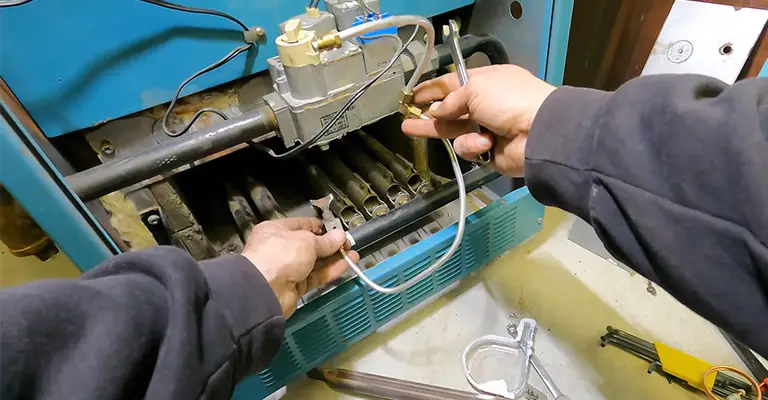
Getting to the point is what we need to do. When the furnace fails to turn on, it can be a bit complicated to light the pilot light. Troubleshooting each factor systematically is crucial to determining the root cause of this problem.
Be sure the pilot light is lit and touches the thermocouple if there is one. Try feeling the side of the furnace if it’s lit, but the burners don’t heat.
A malfunctioning thermostat, gas valve, control board, or gas valve may be the culprit. Ensure that the gas valve is working, and enough fuel is in the tank. Check out this article for more information on how to permanently fix this furnace issue.
Pilot Light Basics
It provides a constant supply of flames in the furnace, which is the purpose of the pilot light. During furnace operation, it lights the burners.
The pilot light ignites a small amount of gas to create a flame, which then ignites a larger gas supply to run the furnace. It is impossible to produce heat if the pilot light goes out.
A couple of underlying issues could jeopardize a furnace system if the pilot light is lit, but the furnace won’t turn on. This issue is usually caused by one of several causes.
1. Corroded Burner Line And Jet
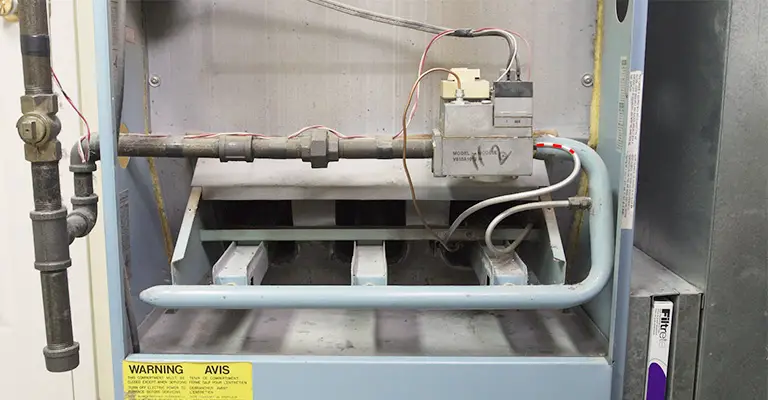
When the burner line is corroded, your furnace will run less efficiently, and if the jet is too small, it might overheat.
Throughout a furnace, the burner line delivers fuel to the burner. A burner line’s size is also quite important since it needs to be large enough to accommodate the right amount of fuel.
The furnace will not perform at its best if the burner line is too small. On the other hand, a too-small jet will limit your furnace‘s capability to heat.
An igniting jet ignites the fuel in a furnace. Also, the jet’s size should be large enough to generate a good, intense flame.
Inspect The Burner Line And Jet
Inspect the burner gas line and jet when your gas appliance doesn’t ignite. It might be necessary to relight the furnace pilot light if you can see that it is out.
When the pilot light is lit, the burner gas line may clog. You can clean it out with a wire brush if it isn’t damaged.
2. Defective Gas Control Valve
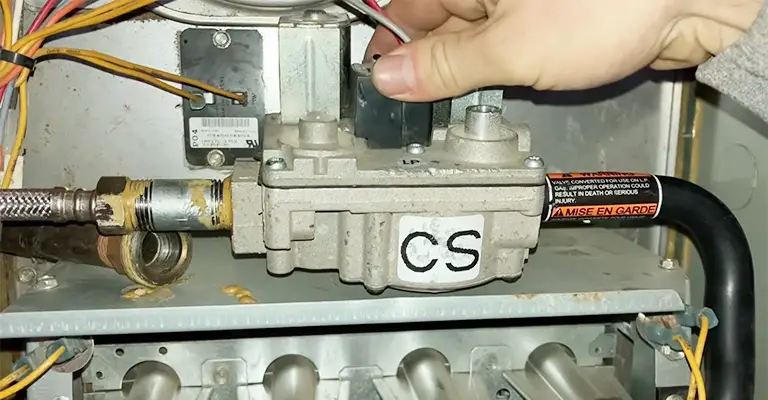
In case of a malfunctioning gas control valve, having it replaced immediately is essential. Several problems can arise from faulty gas control valves, including a gas leak that may threaten your health.
Moreover, a defective gas control valve can prevent your furnace from heating properly, causing high energy bills.
Regulating gas flow to the burner is the responsibility of the gas control valve. In most cases, it is located near the burner or pilot light.
Have The Gas Control Valve Repaired Or Replaced
Gas valves that malfunction are serious furnace issues that a professional should address.
Check and test the gas control valve by a licensed technician, and then repair or replace it as necessary.
3. Thermostat Set Too Low
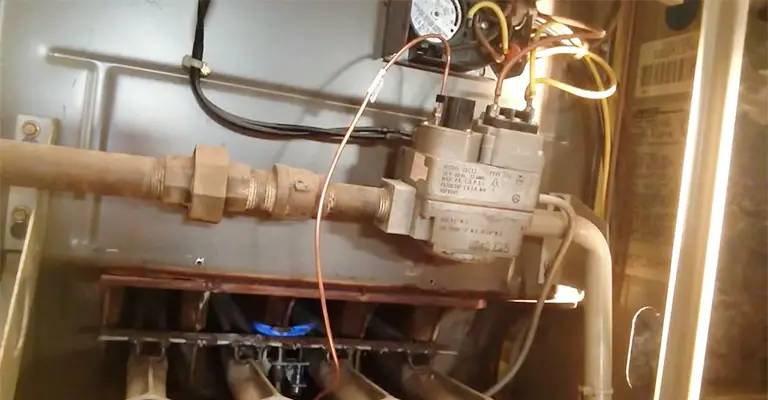
Possibly, your furnace cannot kick on due to a low thermostat setting. Its purpose is to ensure that the furnace is turned on and off depending on the temperature in the room.
When set below room temperature, the thermostat will not activate the furnace.
Adjust The Thermostat Settings
You may have set your thermostat too low, which prevents the furnace from heating. You can change the temperature by turning the knob on the front of the device up.
After raising the temperature, wait a few minutes to see if your gas furnace begins to work.
4. Dirty Or Malfunctioning Flame Sensor
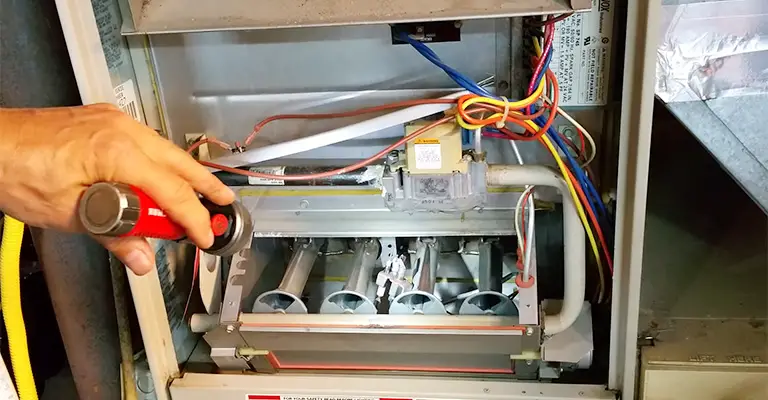
In many cases, a furnace stops working because of a dirty or malfunctioning flame sensor. There is a flame sensor within the furnace, which indicates whether or not there is a flame.
The furnace will shut down when the flame sensor fails to detect the flame. A malfunctioning flame sensor will also prevent the furnace from starting, even though the pilot light is on.
A burned-out flame sensor may cause your furnace to shut down or not turn on.
Clean The Flame Sensor
Dirt and debris can become trapped on the flame sensor over time, preventing it from working properly. It might be time to clean the flame sensor if your furnace fails to start on time or the pilot flame goes out often.
Cleaning your furnace flame sensor requires a small brush or an old toothbrush. Remove dirt and debris from the sensor by gently scrubbing it with the brush.
When the ignition sensor has been cleaned, reconnect it to the furnace and turn it on. Hopefully, now the furnace will operate properly.
5. Clogged Burner
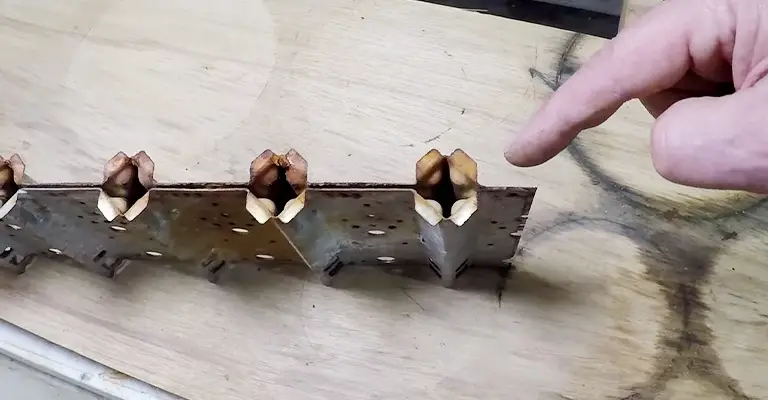
A clogged furnace burner may prevent your furnace from turning on. Cleaning the burner is usually enough to fix this problem, which is generally caused by dirt and dust building up on the burner.
Generally, furnaces have an access panel that makes it possible to clean the burner. The burner will become clogged with soot without regular cleaning and eventually cease functioning.
Observe your burner if your furnace has an access panel. This may be the cause of the furnace not working if you see any accumulated soot or dirt.
Clean The Clogged Burner
Occasionally, a clogged burner may cause your furnace to shut down permanently. You can clean the gas burner on your furnace with just a few simple steps.
To begin with, turn off your gas furnace and allow it to cool completely. To remove the burner assembly from your furnace, follow these steps. You must remove any wires or tubes attached to the burner before you remove it.
Remove the gas burner assembly, and then brush or vacuum away any dirt or debris that has accumulated inside.
Fuel inlet clogs are often caused by something around the fuel inlet.
After cleaning the burner, reassemble the furnace and ensure it works. If you follow these instructions, you should see a significant improvement in your furnace’s performance.
The process may need to be repeated periodically to keep your gas appliance operating efficiently if it has a severe clog.
6. Faulty Igniter
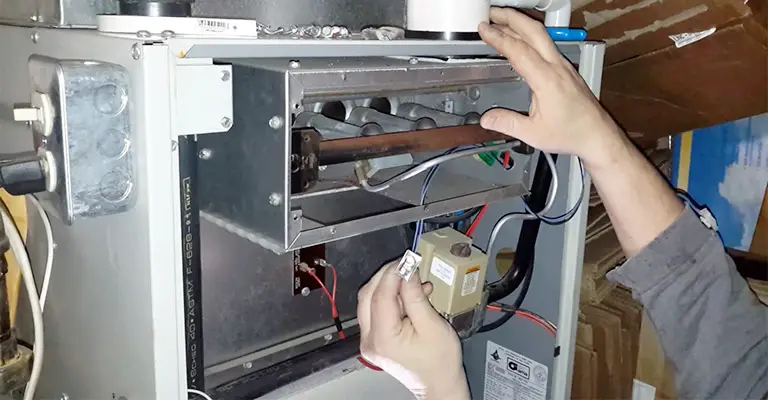
It is usually corrosion or damage that causes a defective igniter. There may be a problem getting enough power to your igniter if it does not spark.
Typically, malfunctioning igniters are caused by dead or malfunctioning batteries. It is likely that, in time, your igniter’s batteries will no longer be able to provide enough power to spark.
It is also possible that the wire connecting the igniter to the battery might have been damaged. Over time, this wire may become worn down, causing the igniter to eventually stop working if it’s not replaced.
In the case of a non-sparking igniter, the igniter likely needs to be replaced.
Replace The Faulty Igniter
A faulty igniter will require a replacement for your furnace. You’ll need to replace the igniters unless you find a heating and cooling parts supplier who offers repair services.
Nevertheless, make sure you choose the right furnace model before launching the installation process.
Final Words
Make an appointment with a heating expert. In case you don’t know what, you’re doing, you may blow the house up (or gas everyone to death).
In addition to the things mentioned above, there are countless other reasons why a furnace might not work.






